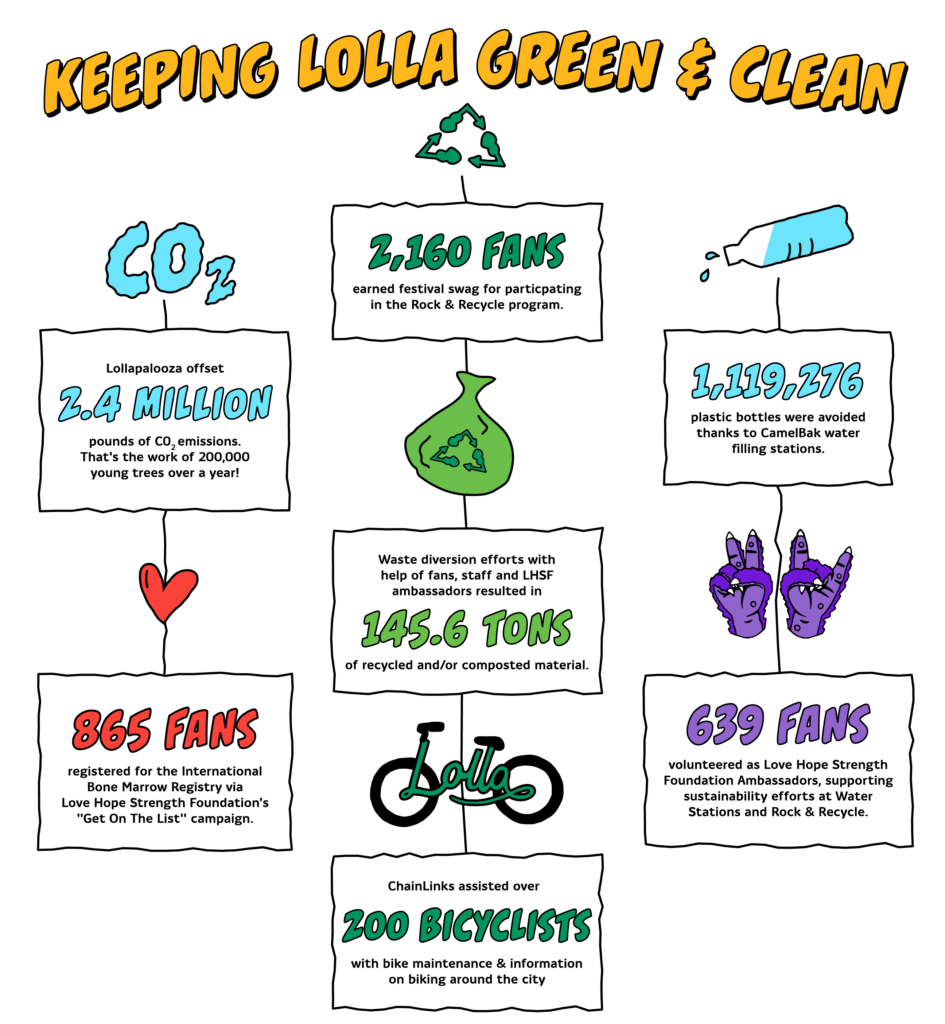
Summer is coming, and that means (among other things) music festivals! There are more than 800 festivals in the U.S. alone every year! Annually in the U.S. approximately 32 million people go to at least one festival! This is great, obviously, because of course music soothes the soul and provides immediate commonality with thousands of people around you. But anyone who’s ever been to a festival, especially a camping festival, probably knows the terrible feeling of shame and guilt as you look over the fields as you leave.

Looking around the last festival grounds I attended, my heart sank. Although I tried to push it away, and prolong the soul-enriching feelings elicited by having seen awesome music…I couldn’t ignore it. I saw trash. Piles of trash, overflowing from the very many bins. Abandoned plastic tents, rustling in the breeze, the owners deciding (incorrectly) they are single-use. Plastic bottles and aluminum cans. Dozens, or even hundreds of them, failing to have made it to the bin at all. This all started to make me think deeper: how much energy was used to blast that wonderful entertainment my way, from let’s say 4 stages for 3 consecutive days for 18 hours each day?? It’s seemingly a sustainability warrior’s worst nightmare!
But you’ll be relieved to know that there are positive moves being made to address all of these issues. Two organizations leading the charge are A Greener Festival, a non-profit company dedicated to helping events, festivals and venues reduce their negative environmental impacts; and Powerful Thinking, a think-do tank bringing together festivals, suppliers and environmental organizations to work towards higher efficiency and a lower carbon emitting industry. The latter has even compiled a report, titled The Show Must Go On, in response to the Paris Climate talks in 2015. This outlines facts and figures and proposes solutions. Here are a few of the more disturbing facts from studying 279 UK festivals during one year: there was 23,500 UK tonnes of waste; 5 million liters of diesel was used; and 100,000 tonnes of CO2e was emitted, including audience travel to the events. Energy usually makes up approximately 65% of the CO2 footprint, while waste is the other 35%.

Waste is the area where certain festivals are really making headway. Glastonbury Festival in the UK, which is attended by 175,000 people (audience numbers only) this year has banned all single use plastic bottles. No vendor is permitted to sell them, and attendees have been implored not to bring any in. This came off the back of the 2017 festival seeing 1.3 million single use plastic bottles being used. It’s not the first environmental move by Glastonbury, given that they are a long time partner of Greenpeace, but it’s certainly the strongest sustainability message they’ve ever sent. Some festivals, like Coachella, Lollapalooza and Groovin The Moo (Aus), offer incentives to attendees to pick up discarded bottles and cans, helping the hundreds of volunteer trash collectors. And most festivals are now refusing to use plastic plates and cutlery, choosing bamboo or compostable.
In terms of the energy use, we’re seeing some great initiatives too. Some festivals latch onto the energy of their (predominantly) young, vibrant crowd and get them cycling for power to stages or showers. Lightning in a Bottle are very sustainably focused, so use renewable energy as much as possible, and have invested in LED stage lighting. Bonnaroo has built a permanent solar array to help with their electricity needs. POHODA Festival in Slovakia teamed up with a local energy provider to install mobile solar power plants, and in fact won the European Green Operations Award in 2017. Lollapalooza gets another mention here, as they work with Green Mountain Energy to offset CO2 from the festival and encourage people to get there and away in a low carbon footprint method. Their initiatives saw them take away the 2017 Illinois Sustainability Award.

The message is clear – a lot of festival goers are looking to be more sustainable and mindful of their carbon footprint, while still enjoying what festivals have to offer. And the organizers are hearing this message. The first few simple steps you can take to enjoy festival season while being environmentally responsible, are: research which festivals are working towards being sustainable and support those; think about your transport – car sharing is good, but still not great, so better yet catch the bus or train (if these options aren’t available, perhaps consider another festival altogether); use your reusable water bottle, and refill from free refill stations; only take what you need: no straws, only one napkin, etc; and super importantly, Leave No Trace – don’t get lazy and leave your tent, chairs or trash behind! Even when we’re at an outdoor, amazing, life changing, soul feeding music festival, we have to think about how we’re impacting the planet!



